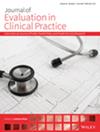Processes for Developing Plain Language Versions of Guidelines Recommendations: A Scoping Review
Abstract
Rationale
Plain language recommendations (PLRs) offer clear and understandable statements based on trustworthy guidelines.
Objective
We aimed to synthesise methodological evidence for developing PLRs in the health care context.
Methods
We followed the JBI methodology for scoping review development and the PRISMA-ScR guidelines for scoping review reporting. PLRs in the context of health care guidelines or patient versions of guidelines were included. A systematic search was run in MEDLINE (Ovid), Embase (Ovid), and the repositories of guideline developers until November 2023. Due to the research´s longitudinal nature, the search was updated in May 2025 to verify findings gathered so far. Reviewers extracted data independently and synthesised evidence narratively.
Results
In total, 2512 citations and 66 repositories of guideline developers were screened. Nine articles from databases and eight documents representing seven sources of evidence from guideline developers' repositories were included in the final synthesis. Information about PLRs, their development, and methodology were summarised. Various infographics are used when creating PLRs. The target groups of PLRs are, e.g. patients, policymakers, the public, and healthcare providers. The patients could be involved in creating PLRs. The developers can draw from the GIN Public Toolkit, RIGHT-PVG checklist or DISCERN. Although these methodologies generally cover the development of knowledge translation tools and patients' version of guidelines (PVGs). Numerous tools can be used to translate scientific language and to formulate PLRs.
Conclusion
We propose policy support for the conduct and implementation of PLRs for healthcare guidelines drawn from available evidence-based resources identified by our review. It is desirable to report approaches for communicating recommendations from healthcare guidelines and verify the actionability and understandability of these formats.


 求助内容:
求助内容: 应助结果提醒方式:
应助结果提醒方式:


